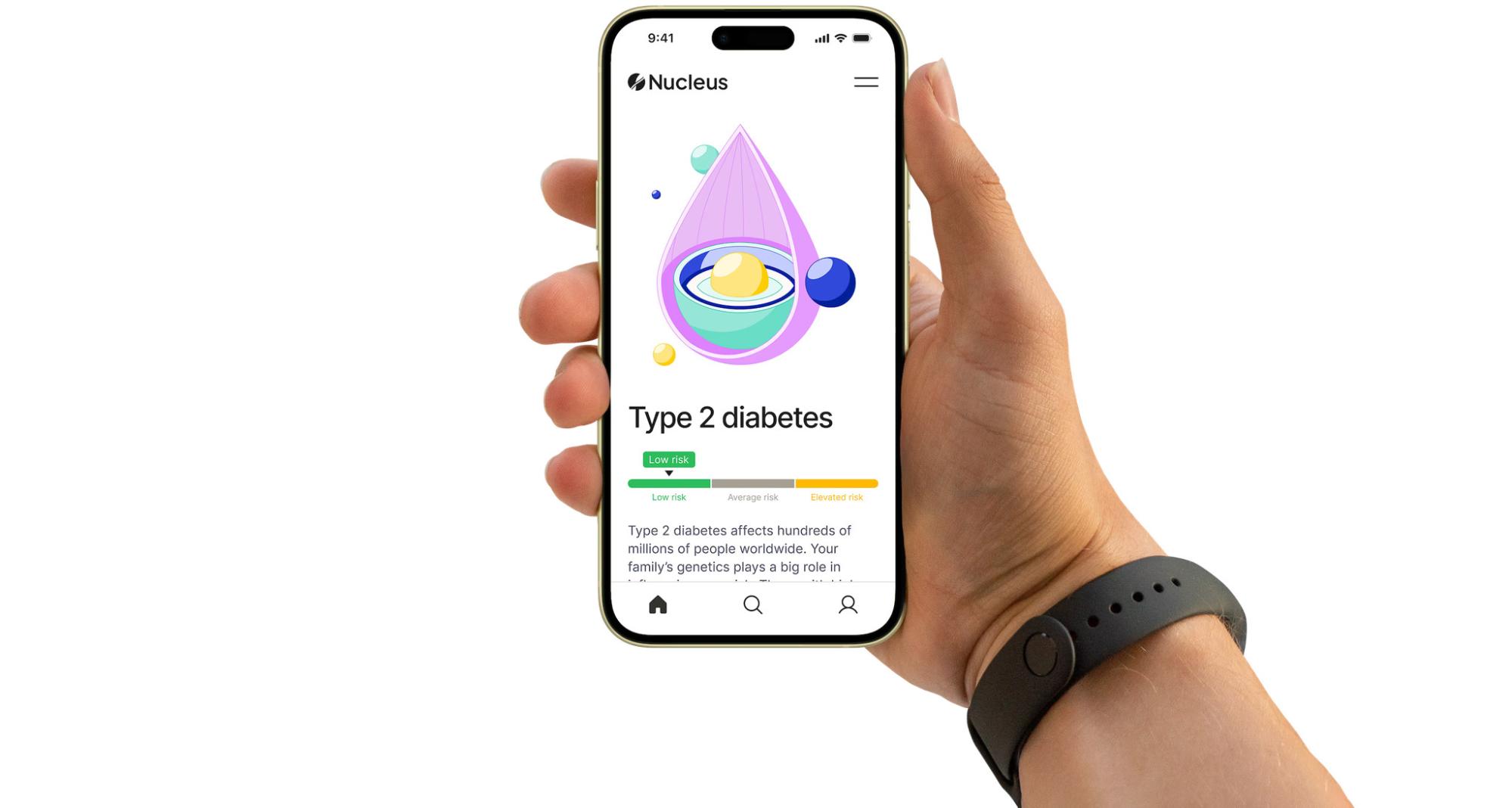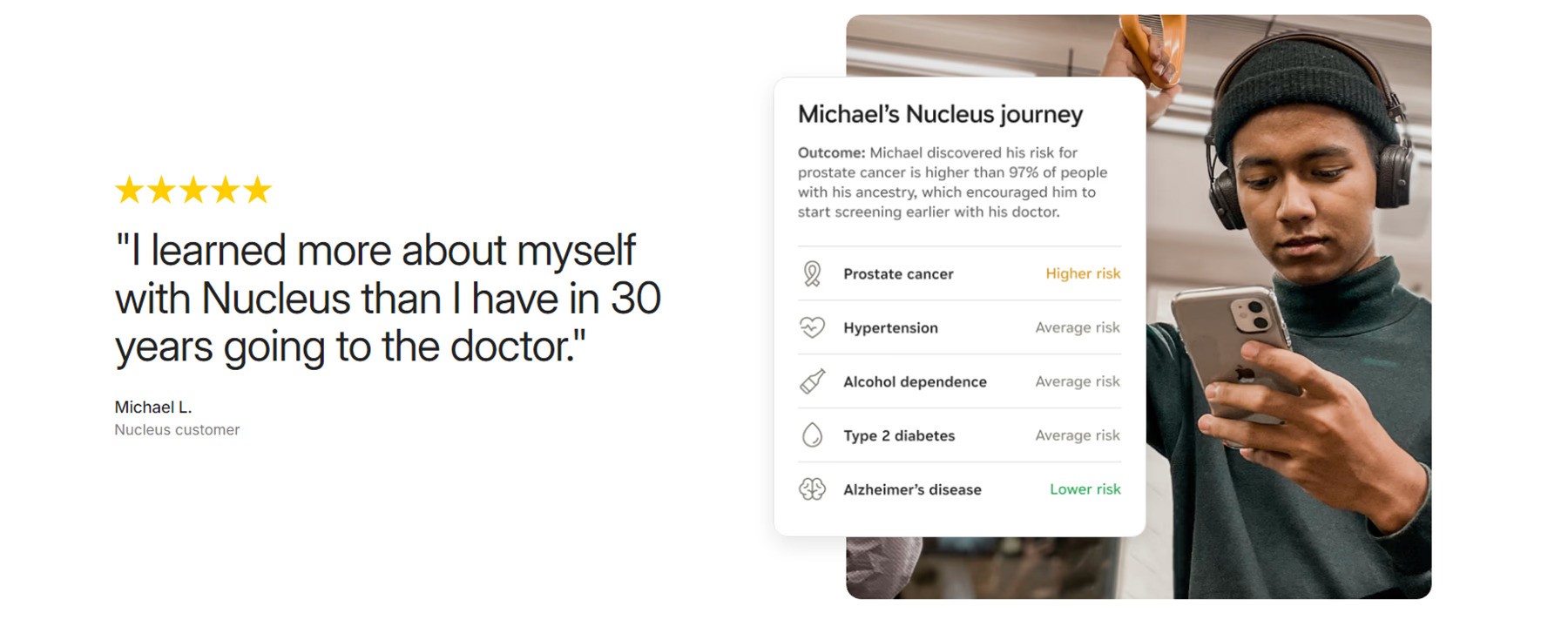Oura Ring and Apple Watch are popular health and fitness trackers that are dominating the wearables niche.
Although these devices are often discussed in the same health optimization context, they offer different features and have unique intended uses.
In this comprehensive guide, we’ll compare Oura vs. Apple Watch in terms of design, functionality, and pricing to help you decide which device is right for you.
Oura Ring vs. Apple Watch: A quick overview
Oura ring is a smart ring that can pass for a regular piece of jewelry while the Apple Watch is a smartwatch with a distinct sporty look.
Both devices measure data related to sleep, heart rate, skin temperature, blood oxygen, etc., and summarize this information in dedicated apps through various easy-to-understand metrics.
In this article, we will review Oura Ring 4 and the Apple Watch Series 10, the latest models available at the time of writing.
Here’s a quick overview of Oura Ring compared to the Apple Watch:
Unlike Oura Ring 4, the Apple Watch Series 10 isn’t just a health and fitness tracker. You can also use it to:
Make and receive calls
Send and receive text messages
Browse the Internet
Get notifications about what’s happening nearby
Translate both text and voice in real-time
Play music, podcasts, and audiobooks
This can be both a pro and a con as some people find it convenient, while others may think it’s overwhelming.
Oura vs. Apple Watch: An in-depth comparison
What the right device for you is depends on your health and fitness priorities, lifestyle, and aesthetic preferences. Here are eight factors that you should consider:
Design
Battery life
Sleep tracking
Activity tracking
Recovery tracking
Stress and cycle tracking
Software and interface
Pricing
1. Design

Source: Oura
Oura Ring 4 is 7.9 mm wide, 2.8 mm thick, and weighs 3.3–5.2 grams (depending on the size), making it noticeably bulkier than a regular ring. It comes in six colors:
Silver
Brushed silver
Black
Stealth
Gold
Rose gold
It’s easy to find a model that will match your skin tone and other jewelry you wear. Due to its design, Oura Ring won’t look out of place even in formal settings. It also may be easy to lose, especially if you are not used to wearing rings.

Source: Apple
The Apple Watch Series 10 comes in two sizes:
46 mm height, 39 mm width, 9.7 mm depth
42 mm height, 36 mm width, 9.7 mm depth
You can choose an aluminum case in jet black, rose gold, and silver or a titanium case in slate, gold, and natural colors. The Apple Watch design is sleek and versatile, and different types of bands are available, so it easily matches different fashion styles.
2. Battery life
According to Oura, the Ring Gen 4 battery lasts around 7–8 days, though users report that the battery life is much shorter, around 3–4 days.
According to Apple, its Apple Watch Series 10 battery can last for up to 18 hours, but users report that the battery life is shorter, especially if you are using GPS features.
This means you’ll need to charge your Apple Watch daily, but with Apple’s new fast charging cable, you can reach 80% charge in only 30 minutes.
3. Sleep tracking
While both Oura Ring 4 and the Apple Watch Series 10 track sleep, the former is known to provide more precise data.
Both devices track sleep duration and the time spent in each sleep stage. They’ll show your daily sleep data and your sleep trends for the previous period, allowing you to track your sleep quality over time.
In 2024, Oura published a peer-reviewed study in the Sensors journal comparing the sleep-tracking accuracy of Oura Ring Gen3, Fitbit Sense 2, and the Apple Watch Series 8. All three devices showed over 95% accuracy in detecting sleep vs. wakefulness. For sleep stage detection, Oura Ring outperformed the Apple Watch in sensitivity and precision, suggesting it may provide more accurate sleep data.
The Apple Watch lets you set sleep goals, bedtime and wake-up times, and reminders to wind down. It can also automatically enter Sleep Mode to limit distractions before bed.
The Apple Watch also has a sleep apnea feature, which is missing from the Oura Ring characteristics. When turned on, it will monitor your sleep for signs of sleep apnea, notifying you and encouraging you to consult a doctor if needed. If you prefer a ring design but want sleep apnea monitoring, consider the RingConn Gen 2. You can learn more about it in our review of the top five Oura Ring alternatives.
Bonus reads:
4. Activity tracking

Both of these devices are popular choices for activity tracking but differ slightly in versatility and the functions they offer. Here’s a breakdown of their key characteristics:
Variety of metrics: Oura Ring 4 focuses on basic activity tracking, monitoring steps, calories, time spent in each heart rate zone, and automatic detection for around 40 activities. The Apple Watch offers a broader range of metrics suitable for fitness enthusiasts, including VO2 max, elevation gain, split times, and recovery metrics.
Versatility: Due to its design, Oura Ring may not be suitable for activities involving holding, gripping, or catching with your hands, making it unsuitable for many sports. The Apple Wach Series 10 is more versatile in this regard.
GPS tracking: The Apple Watch supports GPS tracking and Apple Maps integrations, allowing you to track your workout routes or use the watch for navigation. Oura Ring does not have GPS, but you can track your workout routes using your smartphone’s GPS.
Water resistance: Oura Ring is water-resistant up to 100 meters, and the Apple Watch up to 50 meters, making both suitable for showering, swimming, snorkeling, or scuba diving.
The user consensus is that the Apple Watch is better suited for activity tracking than Oura Ring, especially if you care about improving your athletic performance.
5. Recovery tracking
Oura Ring 4 calculates a readiness score using your resting heart rate, heart rate variability, body temperature, and recent sleep and activity patterns. Ranging from 0–100, this score provides a holistic picture of your health, helping you determine whether to rest (<70), maintain usual activity (70–84), or push your limits (85+).
Oura Ring’s rest mode also automatically alerts you when your body temperature is elevated, reminding you to prioritize recovery. This feature is ideal for those who struggle with overtraining.
The Apple Watch Series 10 lacks a recovery feature but helps you avoid overtraining by establishing a baseline and comparing it to your seven-day training load.
For those focused on fitness performance and recovery, the Whoop wristband may be a better choice. You can learn more about it in our Oura Ring vs. Whoop review.
6. Stress and cycle tracking

Source: Oura
Oura Ring 4 features a Daytime Stress metric that shows how your stress levels fluctuate throughout the day. If your stress increases, you can calm down by doing a guided meditation using Oura’s app.
The Apple Watch Series 10 lacks a dedicated stress-tracking feature but supports third-party apps like Stress Monitor and StressWatch for similar functionality. Overall, Oura Ring may be a better choice if managing stress is your priority.
Both Oura Ring 4 and the Apple Watch Series 10 also support menstrual cycle tracking with predictive capabilities based on skin temperature measurements.
They both also offer integrations with Natural Cycles, an FDA-cleared, non-hormonal birth control method. Keep in mind that it comes with an additional subscription fee.
Bonus read:
7. Software and interface

Source: Apple
Oura Ring 4 has an app that works on iOS, Android, and Windows operating systems. Its interface is user-friendly and emphasizes Sleep, Readiness, and Recovery scores.
The Apple Watch Series 10 has its own WatchOS that comes with pre-installed native apps and allows you to install third-party apps from the app store. This makes the Apple Watch more customizable, but it’s only compatible with other Apple devices.
If you wish to use both devices, you can sync the Apple Watch with Oura Ring to gain maximum functionality.
8. Pricing
Both Oura Ring and the Apple Watch are expensive:
Oura Ring 4 costs $349–$499, depending on the color
The Apple Watch Series 10 starts at $399 for the aluminum case and $699 for the titanium case. The final price depends on customization and add-ons
The crucial difference is that the Apple Watch only requires a one-time payment for the device itself, while Oura Ring also has a subscription fee of $5.99/month or $69.99 per year.
Conclusion: Should you go with Oura Ring or the Apple Watch?
Oura Ring 4 is best suited for wellness tracking, focusing on general well-being, while the Apple Watch Series 10 is a better choice for fitness tracking and athletic performance.
Design is another important factor as each device caters to different lifestyles — Oura Ring has a sleek and unobtrusive design, whereas the Apple Watch may draw more attention.
Cost may also influence your decision. Oura Ring seems more affordable upfront, but its monthly or yearly subscription adds to the costs. With that in mind, the Apple Watch may be the more cost-effective option, especially with an aluminum case.
Many people combine the two to get the best of both worlds—using the Apple Watch for fitness tracking and Oura Ring for wellness insights.
Even though wearable devices like Oura Ring and the Apple Watch can help you take a more data-driven approach to your health, athletic performance, and recovery, they focus on immediate, short-term data. To truly optimize your health and well-being, you should understand your genetics, and this is where Nucleus can provide valuable insights.
Nucleus Premium: Supplement your fitness metrics with DNA data for complete health insights
Nucleus uses whole-genome sequencing to analyze nearly 100% of your genome with 99.99% accuracy. Your genome affects your sleep, nutritional needs, and athletic potential, as well as your susceptibility to stress and your ability to bounce back. It can also predispose you to various diseases, mental health conditions, and even addictions.
Sequencing your genome helps you take a more proactive approach to health optimization based on your genetic profile. Here’s what the Nucleus DNA test offers:
Health reports with risk scores for 800+ physical and mental health conditions, including type-2 diabetes, schizophrenia, and Alzheimer’s disease. Once you understand your genetic predispositions, you can discuss them with your doctor and start taking preventive measures.
Trait reports provide insights into how your genetics affect 9+ personal traits, such as BMI, male-pattern baldness, intelligence, strength, and longevity.
One-on-one genetic counseling as Nucleus partners with SteadyMD to connect you with a board-certified genetic counselor who can offer detailed information about your results and personalized recommendations on further steps.
Nucleus is also HIPAA-compliant, CAP-accredited, and CLIA-certified, ensuring high-quality results and complete privacy of your genetic information.

How to order Nucleus Premium
Here’s how to get started:
Provide the necessary information
Order your DNA kit (FSA/HSA eligible)
Nucleus’ analysis is based on a simple cheek swab — order the test kit, collect a DNA sample, and send it to the lab. Once the lab receives your sample, you can check your results in your Nucleus online account in 6–8 weeks.













